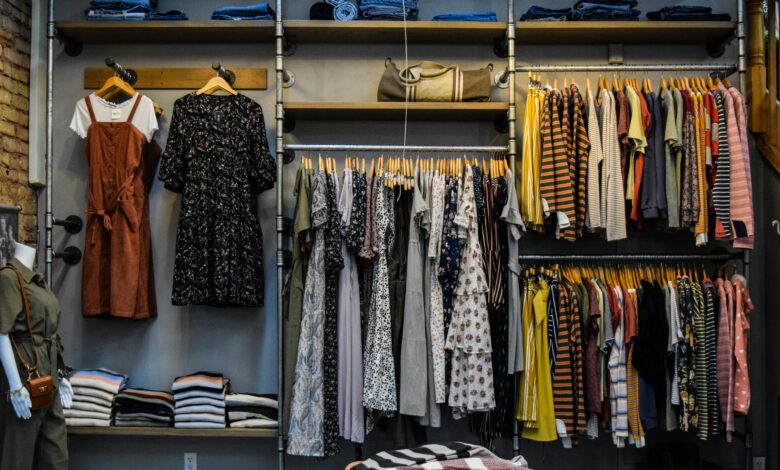How to Build a Sustainable Wardrobe

Explore seven practical steps towards building a sustainable and green wardrobe to mitigate the fashion industry’s adverse effects.
Promoting conscientious consumer decisions is at the core of the sustainability in fashion concept. In response to the environmental repercussions of fast fashion, the slow fashion movement advocates for mindful consumerism to minimize toxins and waste, fostering a deeper connection with the environment.
The choices we make hold significance and building a sustainable wardrobe is a proactive measure to mitigate the fashion industry’s adverse effects on our planet. Establishing a sustainable wardrobe demands dedication and effort, so ensure you are ready and committed to the process.
Continue reading for 7 straightforward steps to reach your objective.
Reduce the environmental impact of laundry
Opt for chemical-free detergents to avoid water pollution, which can seep into the soil and impact our food. Additionally, these detergents can be harsh on clothes, diminishing their lifespan. Wash garments at lower temperatures and air-dry them instead of using energy-intensive dryers. Consider investing in an eco-friendly washing machine or utilizing the eco setting if available. Make fabric choices that reduce the need for ironing, further contributing to environmental conservation.
Invest in quality over quantity
Strategic planning is key. Opting for higher-quality and more sustainable items may initially incur a higher cost compared to choosing cheaper alternatives. However, the shift lies in changing your perspective. While it may be a more substantial upfront investment, the longevity of these items means you’ll ultimately buy fewer pieces each season. Investing in a few high-quality items annually, rather than numerous cheaper, less eco-friendly options, significantly diminishes your carbon footprint. In essence, save up, make thoughtful investments, and practice a mindset of consuming less.
Donate your unwanted clothes
Instead of letting unused garments linger in your wardrobe, donate them to a meaningful cause, fostering sustainability for others. By doing so, someone else gets the opportunity to extend the lifespan of your pieces, giving them a second, or perhaps even a third, life. A practical approach is to adopt a one-in, one-out policy, embracing the idea that for every new purchase, you commit to donating an item.
Go for organic fabrics
Select resilient fabrics that withstand the test of time and demand minimal upkeep. Certain fabrics also exhibit greater eco-consciousness than others. Organic cotton, for instance, is cultivated without GMO seeds, synthetic fertilizers, toxic pesticides, or insecticides.
Biodegradable options include Merino wool and Tencel, while Modal fabric is derived from Beechwood trees from sustainable forests. Recycled polyester is crafted from post-consumer plastic waste, diverted from landfills. Familiarize yourself with different fabrics and opt for those that contribute positively to both your skin and the environment!
Make a list of your favorite Sustainable Brands
Embarking on the journey to build a sustainable wardrobe may feel overwhelming if you’re uncertain about where to make your purchases. Fortunately, the surge in sustainable fashion enterprises provides a plethora of options, as identified in the prior step. Once you’ve scrutinized the data gathered during your research, refine the selection of sustainable brands to a handful of favorites. Consider which ones align most seamlessly with your style and budget, and document them. Before making any new purchases, consult your list to maintain focus and adherence to your sustainable fashion goals.
Ed-A-Mamma and The Souled Store are two sustainable fashion brands that have collaborated with The Disposal Company to neutralize their plastic waste.
Related Article:
The Souled Store is Redefining Sustainable Fashion with The Disposal Company
Ed-A-Mamma Combines Sustainable & Fashion Together With The Disposal Company
Learn how to repair clothes yourself (or find a good tailor)
In addition to donating unneeded garments and selling unused items, a crucial aspect of this transition involves learning how to mend the clothes you wish to retain. Embracing sustainability in fashion can be as straightforward as identifying a skilled tailor you can trust, instead of discarding items that exhibit signs of wear.
Shop small and shop local
Opting for local shopping not only boosts your community’s economy but also minimizes pollution throughout the entire lifecycle of a product, from its creation to delivery at your doorstep. Additionally, by choosing local products, you contribute to fair compensation and adherence to labor laws for the individuals who crafted your garments. A delightful aspect of shopping locally is the opportunity to meet the creators at events where they showcase their work!
Conclusion
Building a sustainable wardrobe requires strategic planning, with an emphasis on quality over quantity. Ultimately, fostering sustainability in fashion is not just a personal choice but a collective effort to mitigate the adverse effects of the fashion industry on the planet. By making informed decisions and adopting eco-conscious practices, individuals can play a vital role in shaping a more sustainable and ethical future for the fashion landscape.
India’s sustainability landscape is being transformed by The Disposal Company, which is offering a pioneering platform that empowers brands to go plastic-neutral and carbon-neutral. Learn more here.




